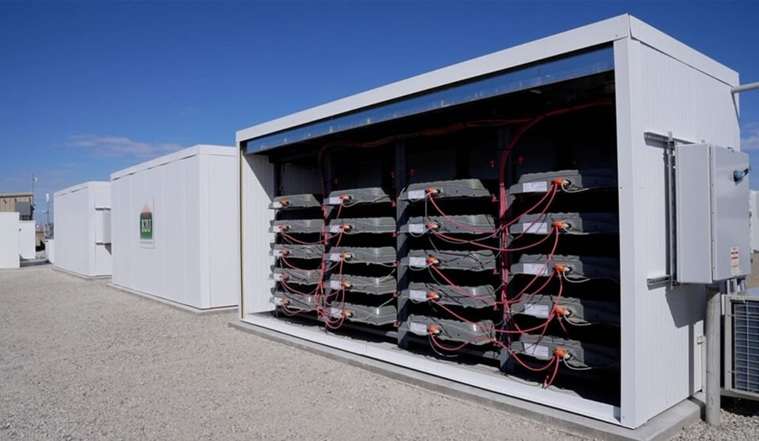Amazing New SOLAR LIQUID to Power for battery
The sun provides us with the same amount of energy as the global economy consumes for one year. And the sad truth is it still produces only 3% of the world’s electricity.
One of the major challenges for renewable power is storage. There are new types of batteries that can store more solar energy for a longer time. But they are still large and expensive.
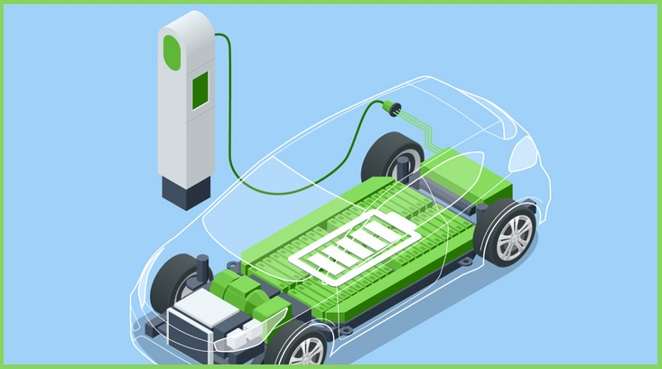
And here comes the good news. Scientists from Sweden have come up with a radically new and ingenious way to utilize the sun’s almost inexhaustible energy, which can potentially replace the combination of solar panels and batteries.
The team has managed to develop a specially designed molecule made of abundant low-cost materials such as carbon, hydrogen, and nitrogen, with unique abilities for capturing sunlight and storing it as chemical energy for up to an incredible 18 years.
When hit by sunlight, the molecule changes its shape and turns into an energy-rich version called an isomer, a molecule made up of the same atoms, but arranged differently.
The reshaped molecule can be stored in a liquid state, regardless of whether or time of day before a specially designed catalyst releases the energy as heat, sending the molecule back to its original shape to be used again.
So the input is sunlight, and the output is heat. But this is just the beginning. Before getting to the point where the researchers successfully turn the heat into electricity,
let’s talk a bit about this breakthrough alone and why it matters. Heat represents half of the industrial energy demand, the major source of which is fossil fuels. Thus, the success of this technology.
Molecular Solar Thermal Storage
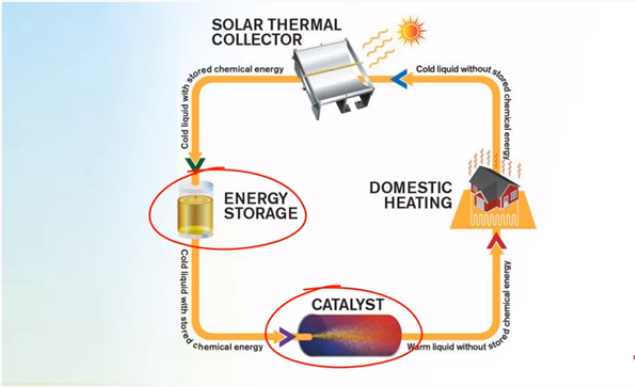
Known as Most, which stands for Molecular Solar Thermal Storage, may lead to new solar-driven and emissions-free solutions for heating, residential and industrial applications.
Besides, this technology can be used in a clear film to be applied to a window film of houses or cars to help get rid of unbearable high temperatures on sunny and hot days, creating a more pleasant indoor climate.
When the film has not absorbed any solar energy, it is yellow or orange. But once the sun shines on the film in the daytime, the molecule starts capturing solar energy.
Gradually turning the film fully transparent in the evening, so it both stores solar energy and keeps much of the solar heat from getting into the room.
The result will be a pleasant indoor environment, even when the sun is at its hottest.
And as the research leader Kasper moth Paulson says, why not make the most of the energy that we get free of charge, instead of trying to fight it in the evening?
Once the sun has passed by the window, the coating starts releasing the stored energy into the room as heat for up to 8 hours, and gradually returns to its yellow form to capture sunlight again the following day.
Previously, this system has been presented for storing solar energy for an extended period, such as from summer to winter, and then used to heat an entire house.
That is a fully closed cycle of energy storage and release without the exchange of materials from the outside world and most importantly, without any emissions.
The challenging part of this technology is that the molecule must efficiently absorb a maximum of the solar spectrum to generate an energy-rich isomer at a high quantum yield.
Energy Absorption
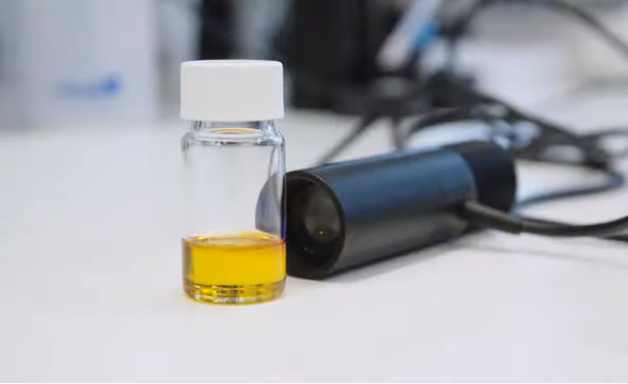
Currently, the efficiency of solar energy absorption for a window film is up to three eight percent, while the energy storage density reaches up to an attractive 00:48 megajoules per kilogram or about 133-watt hours per kilogram.
similar to lithium-ion phosphate batteries, which, for example, can be found in standard range tesla model Three S. I’m very excited about this work.
I think we have worked for many years to achieve it and finally, now we can tell about it.
Refine heat transfer
The next step is to refine the heat transfer, optimize the different materials the system has to be more efficient, quite simply, and this is what we are working on now.
The actual efficiency of the most energy system is significantly lower than the commercial photovoltaic cells due to its molecular structure, but it has the potential to reach up to 25% with a triple molecular layer.
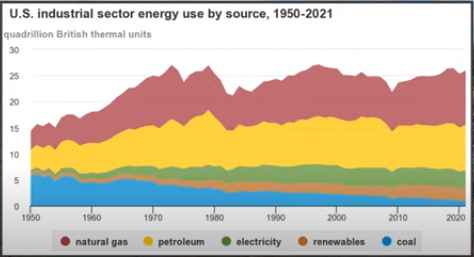
In general, this molecular technology can have various use case scenarios. Imagine molecules in a liquid state could be used in specially made smart windows to store a high amount of energy for winter use.
Once the sun turns the molecules into energy-rich versions, they are directed to the storage tank, while another group of raw molecules is pumped into the windows to capture sunlight.
Again, after demonstrating how the energy can be extracted as heat. The researchers have now succeeded in getting the system to produce electricity from the heat.
In collaboration with scientists at China’s Shanghai Xiao Tong University, the electricity has been produced using a micrometer thin thermoelectric generator, which even though has only generated small amounts of electricity so far, is promising enough to lay the groundwork for self-charging electronics that use solar power on demand.
We’re very excited about this because electric power is used in it. So many applications, like the Internet of things, cell phones, microphones, headphones, etc.
what if they could charge themselves so that we don’t have to change the batteries and put them into a cable all the time to charge them?
What if they could charge themselves with the light in the room or the sunlight?
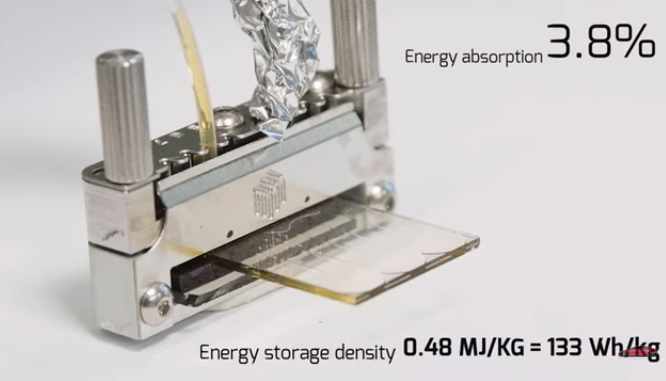
That is the first demonstration, so it’s done on a small scale, but we are working on making larger devices now. We are talking about a few microwatts.
It’s a small amount of power. In the future, maybe it will be thousands of watts with a bigger device.
The team believes this technology could potentially replace the combination of solar cells and batteries in a wide range of applications, eventually providing a more efficient way to store solar energy for a longer time.
Casper also notes that a lot of research and development remains before being able to charge our technical gadgets or heat our homes with this energy system.
But there are now various research groups working to streamline the system so it can extract a large amount of electricity or heat while being cost-effective to produce.
I think we have to improve the efficiency, but also get the price down, so I think it will take us maybe ten to 15 years before we have real devices in people’s homes.
The potential is to have an alternative to solar cells and batteries that they operate through a fundamentally different principle.
So it’s a little bit difficult to know exactly what it would lead to, but we hope with future development, this will be an important part of the future energy system.
Renewable Energy
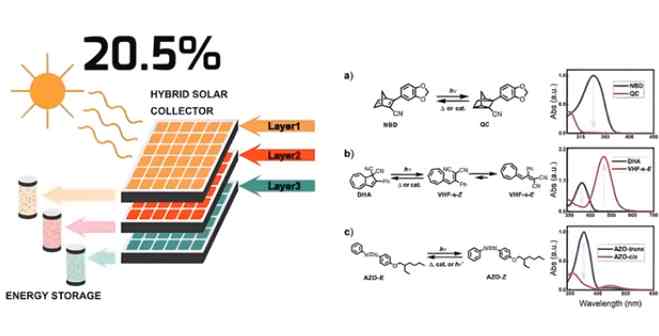
Another groundbreaking use of efficiently storing renewable energy for a long period comes from Finland. Polar Night Energy has installed the world’s first commercial sand-based thermal energy storage system, which is effectively built around a big steel tank containing hundreds of tons of low-grade sand.
The sand can be heated up to about 500 degrees Celsius, employing clean low-cost energy generated from wind or solar energy.
Then a simple heat exchanger circulates the generated hot air to help the sand store the heat for months without loss, for example, to warm homes or offices, especially in this winter when the power becomes significantly expensive amid the fuel crisis.
Currently, the system has a total energy capacity of eight-megawatt hours and can discharge a nominal heat power of 100 kW.
One of the big challenges for the researchers is whether they can scale up the technology so the system can store the targeted 20-gigawatt hours of energy, making 100 megawatts of nominal power with the sand heated as far as 1000 degrees Celsius.
Do you think these technologies of storing renewable energy will play an important role in the future energy system?
Also, which other energy sources do you think have a big potential for replacing fossil fuels?

